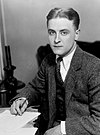
Frank Richard Stockton was an American writer and humorist, best known today for a series of innovative children's fairy tales that were widely popular during the last decades of the 19th century.
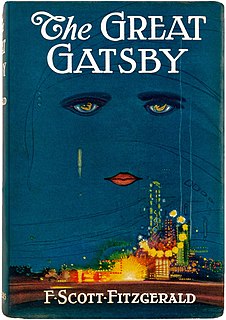
The Great Gatsby is a 1925 novel by American writer F. Scott Fitzgerald. Set in the Jazz Age on Long Island, the novel depicts narrator Nick Carraway's interactions with mysterious millionaire Jay Gatsby and Gatsby's obsession to reunite with his former lover, Daisy Buchanan.

Edith Wharton was an American novelist, short story writer, and designer. Wharton drew upon her insider's knowledge of the upper class New York "aristocracy" to realistically portray the lives and morals of the Gilded Age. In 1921, she became the first woman to win the Pulitzer Prize in Literature, for her novel The Age of Innocence. She was inducted into the National Women's Hall of Fame in 1996. Among her other well known works are the The House of Mirth and the novella Ethan Frome.

A Moveable Feast is a 1964 memoir by American author Ernest Hemingway about his years as a struggling expat journalist and writer in Paris during the 1920s. It was published posthumously. The book details Hemingway's first marriage to Hadley Richardson and his associations with other cultural figures of the Lost Generation in Interwar France.
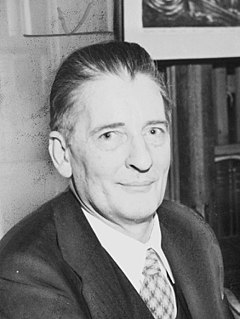
William Maxwell Evarts "Max" Perkins was an American book editor, best remembered for discovering authors Ernest Hemingway, F. Scott Fitzgerald, Marjorie Kinnan Rawlings, and Thomas Wolfe.
An ice palace or ice castle is a castle-like structure made of blocks of ice. These blocks are usually harvested from nearby rivers or lakes when they become frozen in winter. The first known ice palace appeared in St. Petersburg, Russia, and was the handiwork of Empress Anna. Anna Ivanovna, Empress of Russia, commissioned an ice palace in St. Petersburg, Russia, during the winter of 1739-40. Architect Piotr Eropkin and scientist Georg Wolfgang Krafft used huge ice blocks measuring 16 m (52 ft) long by 5 m (16 ft) wide, joined together with frozen water, to build the palace. The city recreates the ice palace every winter.

The Ivy Club, often simply Ivy, is the oldest eating club at Princeton University, and it is "still considered the most prestigious" by its members. It was founded in 1879 with Arthur Hawley Scribner as its first head. Ivy is one of the "Big Four" eating clubs at Princeton, the four oldest and most prestigious on campus. Tiger Inn is the third oldest Princeton Eating Club.
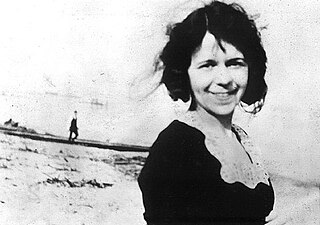
Dawn Powell was an award-winning novelist, playwright, screenwriter, and short story writer. Known for her acid-tongued prose, "her relative obscurity was likely due to a general distaste for her harsh satiric tone." Nonetheless, Stella Adler and author Clifford Odets appeared in one of her plays. Her work was praised by Robert Benchley in the New Yorker and, in 1939, she was signed as a Scribner author where Maxwell Perkins, famous for his work with many of her contemporaries, including Hemingway, Fitzgerald and Thomas Wolfe, became her editor. A 1963 nominee for the National Book Award, she received an American Academy of Arts and Letters Marjorie Peabody Waite Award for lifetime achievement in literature the following year. Friend to many literary and arts figures of her day, including author John Dos Passos, critic Edmund Wilson, and poet E.E. Cummings, her work received renewed interest after Gore Vidal praised it in an 1987 editorial for the New York Review of Books. Since then, the Library of America has published two collections of her novels.

The Short Stories of F. Scott Fitzgerald is a compilation of 43 short stories by F. Scott Fitzgerald. It was edited by Matthew J. Bruccoli and published by Charles Scribner's Sons in 1989. It begins with a foreword by Charles Scribner II and a preface written by Bruccoli, after which the stories follow in chronological order of publication.
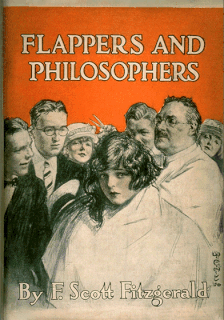
Flappers and Philosophers is the first collection of short stories written by F. Scott Fitzgerald, published in 1920. It includes eight stories:
"The Cut-Glass Bowl" is a short story by American author F. Scott Fitzgerald, first published in the May 1920 issue of Scribner's Magazine, and included later that year in his first short story collection Flappers and Philosophers. It tracks the lives of a married couple in New York, Evylyn and Harold Piper, through various difficult or tragic events that involve a cut glass bowl they received as a wedding gift.

Babylon Revisited and Other Stories is a collection of ten short stories written between 1920 and 1937 by F. Scott Fitzgerald. It was published in 1960 by Charles Scribner's Sons.

"Winter Dreams" is a short story by F. Scott Fitzgerald that was first published in Metropolitan magazine in December 1922 and later collected in All the Sad Young Men in 1926. The story, frequently anthologized, is regarded as one of Fitzgerald's finest works "for poignantly portraying the loss of youthful illusions."

Tales of the Jazz Age (1922) is a collection of eleven short stories by F. Scott Fitzgerald. Divided into three separate parts, according to subject matter, it includes one of his better-known short stories, "The Curious Case of Benjamin Button". All of the stories had been published earlier, independently, in either Metropolitan Magazine , Saturday Evening Post, Smart Set, Collier's, Chicago Sunday Tribune, or Vanity Fair.

Grace Hodgson Flandrau was an American author of novels, short stories and journalistic pieces. Although she achieved a certain degree of critical acclaim for several of her novels, short stories and some of her journalism career during the 1920s, 1930s and 1940s, she faded from public literary view in the later part of her life. Flaudrau's reputation is re-emerging as a prominent writer due to a 2007 biography, which has been promoted by, among others, Garrison Keillor.

Francis Scott Key Fitzgerald was an American novelist, essayist, screenwriter, and Short story writer. He was best known for his novels depicting the flamboyance and excess of the Jazz Age—a term which he popularized. During his lifetime, he published four novels, four collections of short stories, and 164 short stories. Although he temporarily achieved popular success and fortune in the 1920s, Fitzgerald only received wide critical and popular acclaim after his death. He is widely regarded as one of the greatest American writers of the 20th century.

All the Sad Young Men is the third collection of short stories written by F. Scott Fitzgerald, published by Scribners in February 1926.

"Cross Country Snow" is a short story written by Ernest Hemingway. The story was first published in 1924 in Ford Madox Ford's literary magazine Transatlantic Review in Paris and republished by Boni & Liveright in Hemingway's first American volume of short stories In Our Time in 1925. The story features Hemingway's recurrent autobiographical character Nick Adams and explores the regenerative powers of nature and the joy of skiing.

Anna Bowman Dodd was an American author from New York. She wrote short stories, essays and a series of articles on church music. After Dodd wrote a paper on the Concord School of Philosophy for Appleton's Magazine, English journals copied it, a French translation was reprinted in Émile Littré's Revue Philosophique, and the author found her services in growing demand. She was engaged by Harper's Magazine in 1881 to furnish an exhaustive article on the political leaders of France, which she prepared for by going to France, in order to study the subject more closely. The paper's editor, Henry Mills Alden, pronounced it as 'the most brilliant article of the kind we have had in ten years'. Before returning to the U.S., she visited Rome and prepared a description of the carnival for Harper's.
"The Adjuster" is a short story written by American author F. Scott Fitzgerald. The story appears in Fitzgerald's third collection of short stories All the Sad Young Men, published by Scribners in February 1926. The story depicts the troubled relationship of married couple Luella and Charles Hemple, living in New York City in 1925.


















